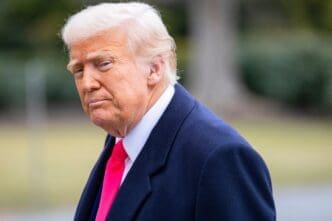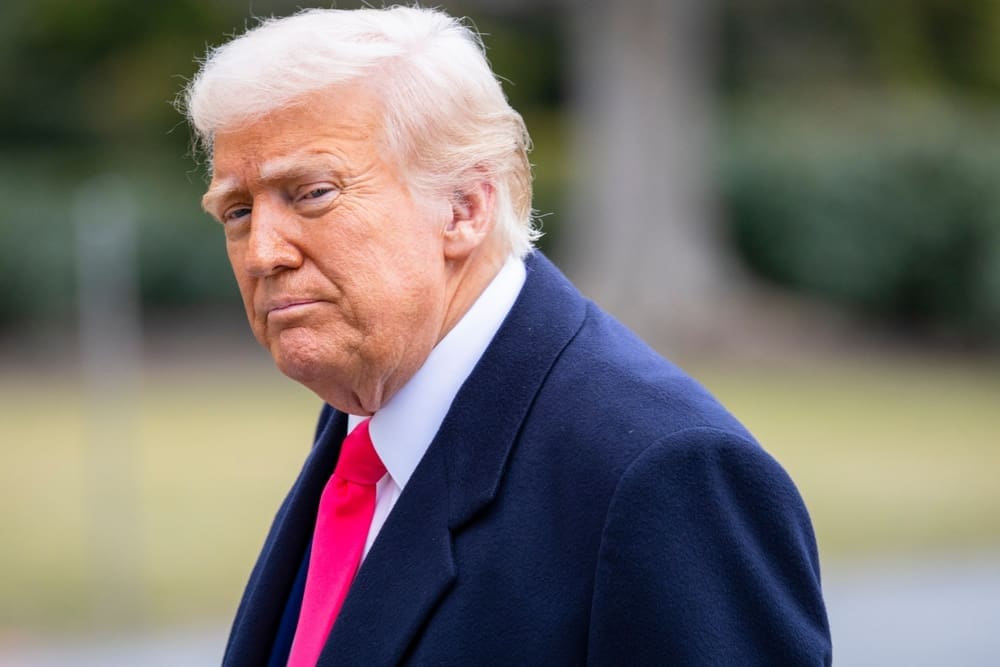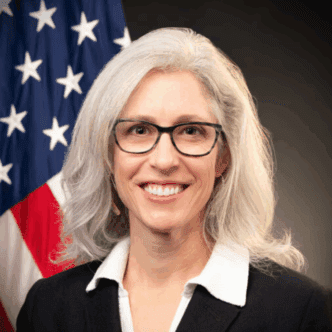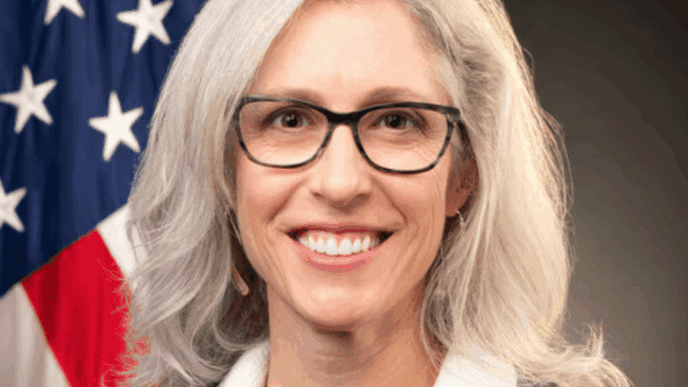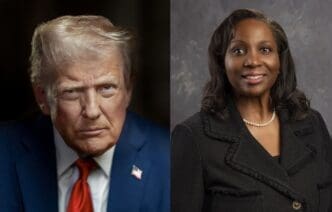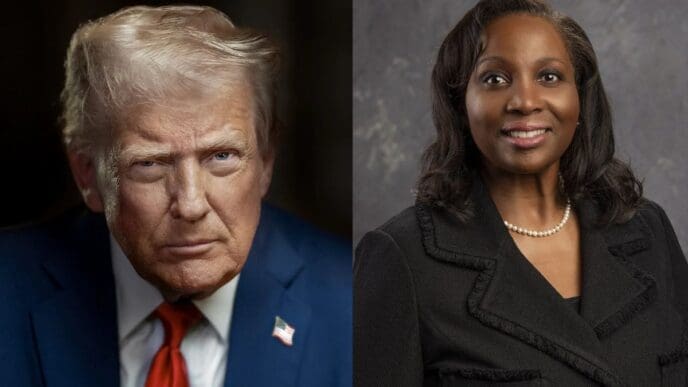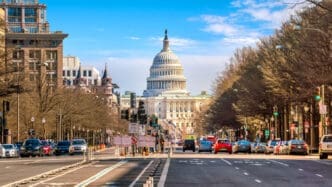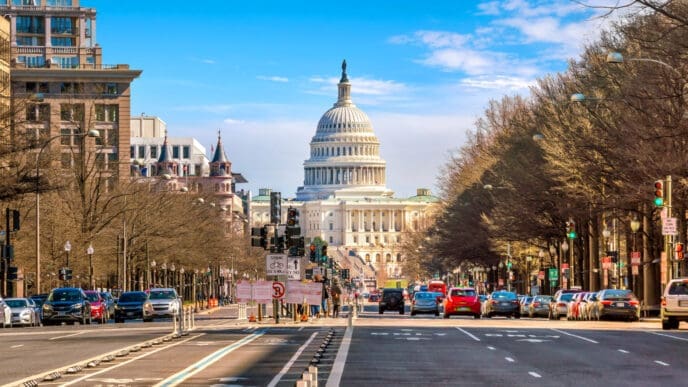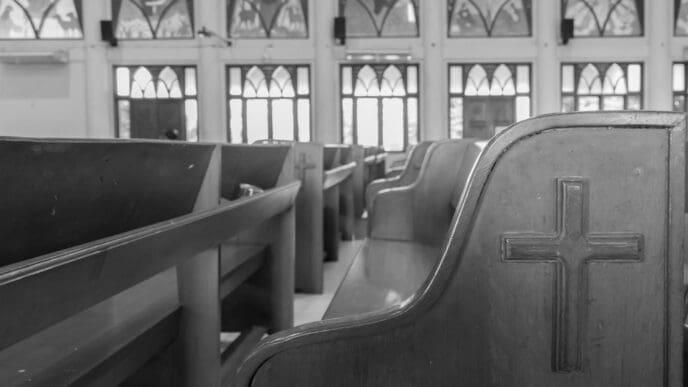WASHINGTON – President Donald Trump on Wednesday publicly denied that he plans to fire Federal Reserve Chairman Jerome Powell, a chaotic reversal that came just hours after he told a room full of Republican lawmakers that he intended to oust the nation’s top central banker. The whiplash of conflicting messages from the White House sent shivers through financial markets, ignited a debate about the legality of such a move, and escalated the president’s long-running war against the independence of the Federal Reserve.
The president’s public comments on Wednesday afternoon were an attempt to quell a firestorm that his own administration had started. “We’re not planning on doing it,” Trump told reporters at the White House. He then immediately undercut his own denial, adding a characteristic hedge: “I don’t rule out anything, but I think it’s highly unlikely, unless he has to leave for fraud.”
That statement directly contradicted accounts from a senior White House official and multiple lawmakers about a meeting in the Oval Office on Tuesday evening. During that meeting, which was ostensibly about cryptocurrency regulation, Trump reportedly asked a group of visiting House Republicans if they thought he should fire Powell. After receiving enthusiastic support for the move, the president indicated he would follow through.
“The President asked lawmakers how they felt about firing the Fed Chair. They expressed approval for firing him. The President indicated he likely will soon,” a senior White House official confirmed, speaking on the condition of anonymity to discuss the private conversation. The New York Times later reported that Trump had gone so far as to draft a letter for firing Powell and had shown it to the lawmakers during the meeting.
The initial reports of the president’s plan sent U.S. stocks tumbling, with the S&P 500 dropping as much as 0.7% before recovering after Trump’s public denial. The market’s violent swing captured the deep conflict facing investors: the short-term allure of a new, more politically pliant Fed chair who would slash interest rates, versus the long-term fear of a weakened central bank unable to make the unpopular decisions needed to control inflation.
The episode marks the most direct and serious threat to the independence of the Federal Reserve in modern history. No president has ever attempted to fire a Fed chair, an action that Powell himself has said is “not permitted under the law.” While the president can nominate a chair, the Federal Reserve Act states that governors (a chair serves concurrently as a governor) can only be removed “for cause.” The courts have generally interpreted “cause” to mean neglect of duty or illegal conduct, not a disagreement over monetary policy. A recent Supreme Court decision further indicated that the president does not have the authority to remove Fed officials at will.
Aware of this legal barrier, the Trump administration appears to be launching a multipronged attack to build a case for removing Powell “for cause.” The president and his allies have recently seized on the ongoing, $2.5 billion renovation of the Fed’s Washington headquarters, a project beset by cost overruns. Trump on Wednesday suggested this could be a pretext for Powell’s removal.
“Fraud is possible… So there could be something to that,” Trump said, before returning to his core complaint. “But I think he’s not doing a good job. He’s got a very easy job to do. You know what he has to do? Lower interest rates.”
The president’s fury with Powell stems from the Fed’s decision to hold interest rates steady this year after a series of cuts in late 2024. The central bank’s overnight borrowing rate is currently targeted between 4.25%-4.5%, and Trump has indicated he would like to see that slashed by as much as three percentage points. He has accused Powell of being politically motivated, claiming the 2024 rate cuts were designed to help the prospects of Democratic nominee Kamala Harris.
The campaign against Powell has created a chaotic and divided front within the Republican party. While some lawmakers in the Tuesday meeting cheered on the president, others have tried to walk back the threat. Rep. French Hill of Arkansas, the chair of the House Financial Services Committee, said in a CNBC interview Wednesday that “I don’t see” Trump firing Powell. Treasury Secretary Scott Bessent also told Bloomberg News he didn’t expect the president to move in that direction.
However, more populist members of the party are fanning the flames. Rep. Anna Paulina Luna, a Florida Republican, took to the social media site X on Tuesday night to declare that a move against Powell was imminent. “Hearing Jerome Powell is getting fired! From a very serious source,” she wrote, later adding, “I’m 99% sure firing is imminent.”
The conflict is particularly notable given that Trump himself nominated Powell to succeed Janet Yellen in 2018. But the president has been a frequent and harsh critic of his own appointee, both during his first term and his second. His criticism now extends to the entire Federal Reserve Board. “That goes for his board too, because his board is not doing the job as they should,” Trump said Wednesday. This includes his other appointees, Governors Michelle Bowman and Christopher Waller, both of whom have recently indicated a willingness to consider rate cuts, though not at the aggressive pace the president is demanding.
The public feud and the threat to Powell’s job security have profound implications for the U.S. and global economies. The independence of a central bank is seen by economists as a critical pillar of long-term financial stability. It allows the institution to make difficult decisions to control inflation, such as raising interest rates, without facing short-term political pressure from elected officials who might be more focused on the next election cycle. A perception that the Fed is beholden to the White House could erode its credibility, leading to higher inflation expectations and greater market volatility in the long run.
For now, the situation remains in flux, a testament to the president’s volatile and often contradictory governing style. While the markets have stabilized on his public denial, the president’s clear willingness to float the idea of firing his Fed chair has introduced a new level of uncertainty into an already complex economic environment, leaving investors, businesses, and global partners to wonder what the next tweet or Oval Office meeting might bring.
